

SUUNTOブログ
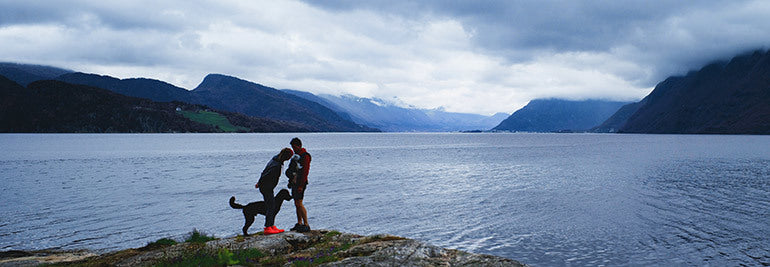
Becoming a mother and staying in love with the mountains
New roles for everyone: As Emelie heads out training, Kilian stays home with Maj.
After nine months of pregnancy, resting and recovering after birth, Suunto ambassador Emelie Forsberg is training again in the mountains and fjords of Norway where she and her partner Kilian Jornet live a life filled with adventure.
True to her background in seasonal farming, gardening and eating, Emelie understands well there is a season for everything, and is taking her time to come back to elite mountain running and skiing form.
“I don’t push my boundaries because I prefer to take small steps and to do it really healthy and slow,” she says. “That might mean my way back will be longer, but that’s who I am. I would regret it so much if I took too big a step and got injured. I want to take things slow.”
Watch below and see how Emelie is balancing the joy of being a new mum with finding her legs again as one of the best mountain athletes on the planet.
WATCH "BEING AN ATHLETE AND A NEW MUM"
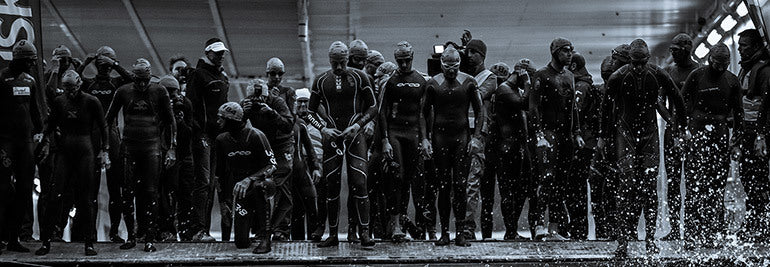
Watch Norseman extreme triathlon live!
Tune into watch one of the world's toughest long-distance triathlons – the notorious Isklar Norseman – live this Saturday. The race will be split into five live episodes, capturing key sections where the action is at it's most intense.
Competing in Norseman requires maxiumum mental toughness and takes human physiology to it's limits. When competitors cross the finish line on Gaustatoppen's summit, they will have completed a 3,8km swim, 180km bike ride and a marathon – and climbed 5000 m of altitude along the way!
Unlike traditional triathlons, Norseman is a point-to-point competition. From Eidfjord on the west coast to the finish on Gaustatoppen in the east, Norseman takes competitors through some of the most amazing landscapes Norway has to offer.
Click to read about the origins of the extreme Norseman!
Watch Norseman live on Saturday, August 3. The race starts at 5am (CET).
The Norseman live broadcast is split into five major episodes:Episode 1: 06:30 to 07:30 Live from T1 and recap from the swim.Episode 2: 08:30 to 09:30 Live from Dyranut and recap from the swim and the first ascent.Episode 3: 12:00 to 13:00 Live from T2 and recap from the swim and the bike.Episode 4: 15:00 to 16:00 Live from the mountain climb and recap from the the race so far.Episode 5: 17:00 to 18:30 Live from the mountain top. Looking at the winners, talking to them. More finishers.
Main image © Snorre Veggan / nxtri.com
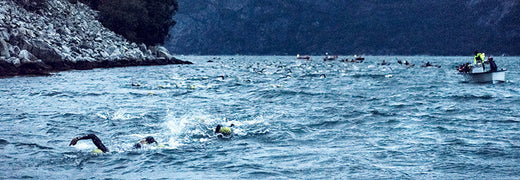
Is Isklar Norseman the hardest triathlon on the planet?
On Saturday August 3 at 5 AM (CET) the 17 th edition of Isklar Norseman Xtreme triathlon begins when 250 athletes from all over the world jump off the ferry in Hardangerfjorden. Learn about this epic race's beginnings from the guy who started it all: Isklar Norseman founder Hårek Stranheim .
Let’s start simple: why?
Hårek: In 2000 only nine Norwegians had completed a long distance triathlon in Norway. I discussed with my good friend Bent what could be done to popularize this beautiful sport here in Norway. Bent wanted to start a triathlon club and he went and founded Oslofjord Triatlon Club. I wanted to organize and create a unique competition. I described the idea in an e-mail to Bent later the same day:
“I want to create a completely different race, make it a journey through the most beautiful nature of Norway, let the experience be more important than the finish time, and let the participants share their experience with family and friends, who will be their support. Let the race end on top of a mountain, to make it the hardest long-distance triathlon on earth. Since Norway has almost no active triathletes, we need to create a race that first attracts German triathletes, who can let the Norwegians discover that they are missing out on a great opportunity to have fun.”
Another purpose with Isklar Norseman was that I was always ending up last among the Norwegian triathletes; I simply wanted to recruit more lantern rouges into the sport. Bent did not fancy my idea too much. “I would never be able to finish this race”, he said.
Norseman’s bike leg crosses Hardangervidda, the largest mountain plateau in Northern Europe. (Image by Kyle Meyr / nxtri.com)
Tell us about the first Isklar Norseman.
Hårek: The pioneer edition was a great experience. When we finished the final route decisions for the 3,8 km swim, 180.6 km bike and 42,2 km run it was a beautiful A to B course. The swim was in the Hardangerfjord in Eidfjord, the bike segment was crossing the largest mountain plateau in Northern Europe, Hardangervidda, and the final run ended at the majestic Mt. Gaustatoppen (1883 m) in Rjukan. I believe the communities of Eidfjord and Rjukan thought we were crazy, but they gave us wonderful support and we knew it was something great going on.
WATCH NORSEMAN LIVE ON AUGUST 3
How many people did the first race?
Hårek: 21 competitors showed up in Eidfjord July 19th 2003 and to their astonishment, I was also on the start line together with the rest of the organizing committee, so our wives and families had to organize the race, to their big surprise. 19 competitors reached the summit of Mt. Gaustatoppen later that day.
When the competitors cross the finish line on Gaustatoppen they will have climbed 5000 m. (Image by Agurtxane Concellon/ nxtri.com)
Why must you provide your own support for Isklar Norseman?
Hårek: The support aspect of Norseman is to create a race that competitors must share with their family or friends. They have to plan the race together and share the entire day together. Instead of excluding family and friends in the preparations for the race, the competitors must include them. It's hard work to be support during Isklar Norseman, but it is a great moment for both support and competitor to share all ups and downs in a long distance triathlon. The support teams put a lot of energy, and it's not unusual that they forget to eat race day – they are completely into their mission of getting their competitor to the finish line.
What is your best memory from the years with Isklar Norseman?
Hårek: There is a bunch of good memories from Isklar Norseman. The joy and excitement in Eidfjord before the event always gives me goosebumps. The electric atmosphere the evening before all the competitors jump into the water is really something all triathletes should experience once in their lifetime. But the best memory is probably to sit on a rock at the finish line at Mt. Gaustatoppen after a long day, with my support, looking at the course and scenery you have conquered in one day.
Follow the 250 participants live on suunto.com Saturday August 3th, 5 AM (CET).
FACTS ABOUT ISKLAR NORSEMAN XTREME TRIATHLON:
The race finishes on 1883m high Gaustatoppen, the highest mountain in Telemark county in Norway. (Image by Thomas Dahlset / nxtri.com)
Norseman is a long distance triathlon with a 3800m swim, 180km of cycling and a 42km run. When athletes cross the finish line, they have climbed 5000m of altitude.
Unlike a traditional triathlon, Norseman is a point-to-point competition. From Eidfjord on the west coast to the finish on Gausta peak in the east, Norseman takes competitors through the most amazing landscape Norway has to offer.
Every year race organizers hand out 250 slots in Norseman's famous lottery. Today the race is a proud host to athletes of all ages from all over the world. World champions like Björn Andersson, Jonas Colting and Tim DeBoom are among those who have made it to the top of Mt. Gaustatoppen – and they have all left with the same trophy: a black t-shirt. Main image by Kyle Meyr /nxtri.com
5 inspiring coral reef restoration projects
Diving rich, rainbow colored coral reefs is every diver’s dream. We travel the planet to experience them, leaving us in awe of how staggeringly beautiful they are. Imagining our oceans without them is simply heartbreaking.
Yet, mass coral bleaching events – due to a rise in global surface temperature – could cause all 29 reef containing World Heritage sites to cease to exist by the end of the century. The stakes have never been higher.
To stop this from happening, divers, scientists and ocean conservationists are teaming up to find solutions. We look at five inspiring initiatives to save the coral, and also what you can do to help.
Reef Rescuers, Cousin Island, Seychelles
In a way, every diver should identify as a reef rescuer, and do what he or she can, even if only make donations, to support one of these initiatives. Starting in 2010, this huge and impressive restoration project has raised 40,000 corals in underwater nurseries, with 24,000 of these being successfully transplanted onto reefs, covering an area of a football field. The project utilised the coral gardening technique of retrieving fragments of healthy coral, growing it in protected nurseries and then transplanting it onto degraded reef to help rejuvenate it. Based on its learning, the project created a Coral Reef Restoration Toolkit for other initiatives to benefit from.
Secore Coral, Yucatan Peninsula, Mexico
Starting in 2015, this pilot project researched and tested new techniques to use coral grown in land-based or ocean nurseries for restoration, waiting until they are old enough to plant out on reefs where they are then monitored. This inspiring documentary below shows what’s possible.
Pur Coral, Indonesia
Coral reefs across the world need all the help they can get, including financial support from the corporate sector for restoration projects. French dermo-cosmetics brand EAU THERMALE AVÈNE partnered with Pur Projet to create Pur Coral, a project to preserve and regenerate marine ecosystems in Pejarakan, Bali. The corals had been destroyed mostly by cyanide and dynamite fishing, which are now banned there. Since its start in 2016, the project immersed 24 artificial reef structures underwater, then planted 1855 corals, from more than 15 species, on them. For several years Avène has engaged in an eco-responsible initiative called "Skin Protect Ocean Respect" to raise awareness about the impact of sun protection on the environment, and particularly on the marine life and corals. Avène has also been a leader in redesigning its sunscreen product range, minimizing the impact on the environment without compromising on optimal UVB-UVA protection for the skin.
RangerBot, Great Barrier Reef, Australia
Like a Swiss army knife, a state-of-the-art robo reef protector developed by researchers at Queensland University of Technology in Australia – RangerBot – has a number of functions, all designed to protect one of the wonders of the world, the Great Barrier Reef. It’s first function is to search and destroy; its incredible cameras identify invasive Crown-of-Thorns Starfish and injects them with a lethal dose of poison. It also monitors the health of the coral and water quality. It can also map vast areas underwater at scales not previously possible.
World’s largest 3D printed reef, MARS, Summer Island, Maldives
The Modular Artificial Reef Structure (MARS) is an ongoing project developed by industrial designer Alex Goad. It utilises 3D printing to provide a rigid skeleton on which corals can be implanted and grown. In August 2018, they submerged the first reef off the coast of Summer Island, in an area where there has never been a coral reef, and where locals have been growing corals. Alex says the ease, affordability, flexibility of 3D printing can play an amazing role in preserving coral around the world.
6 ways you can make a small difference
Conscious travel
Air and vehicle travel are major contributors to the rising greenhouse emissions driving the climate crisis. Consider trying to reduce both. For example, use public transport or ride a bicycle whenever you can. And when you do fly, offset the carbon emissions from your flight by using a carbon calculator, and compensating a green cause of your choice.
Hands off
When you’re out diving, don’t touch coral or any marine animals. Keep a respectful distance. Don’t pursue animals to get that trophy photo. And don’t collect shells and so forth as souvenirs – remember that hundreds of people dive the same site, and if every diver took a souvenir it would create a big problem.
Use eco-friendly sunscreen
Use sunscreens based on eco-designed, biodegradable formulas. Avoid products that have the following ingredients in them: Octocrylène, Benzophenone, Methoxycinnamate. Take a look at Avène’s sunscreen range – they are brand of choice for divers at Suunto head office.
Be a tidy diver
Single use plastics really are an abomination. Divers should lead the way and quit using them. Be sure to clean up any plastic trash after your dive when you’re back on land.
Start “strawkling”
Strawkling is a new recreation that combines snorkeling and collecting litter. Take a net-cloth bag on your next dive, and collect any plastic litter you find. Imagine if we all did this!
Change your business practices
If you own, manage or work for an organisation in the global dive community, join Suunto in getting onboard with Mission 2020 and changing your business practices so they help protect and preserve our oceans for the future.
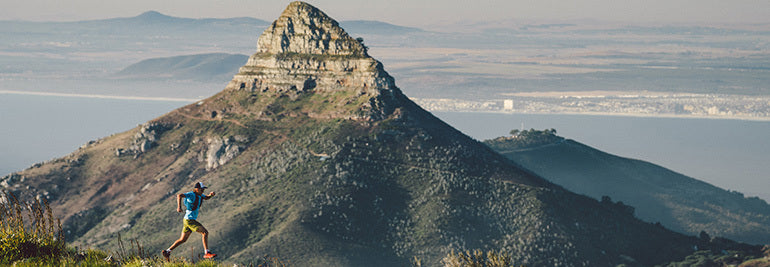
Ryan Sandes’s new 13 Peaks Challenge and the joy of backyard adventure
© Jared Paisley
The summit of Table Mountain towers 1054 m above Cape Town below. The keystone of Table Mountain National Park, the peak is famous for its biodiversity and incredible panoramic views.
This is Suunto ambassador Ryan Sandes’s home training ground. It’s where he prepares for the ultra marathons he races in around the world. He’s know this terrain like the back of his hand.
“Table Mountain is one of the few places where you can go from the city to the top of a mountain in under an hour,” Ryan says. “There’s something really magical about it and the whole Cape Peninsula – the combination of really technical trails, beautiful landscapes and ocean views.”
© Jared Paisley
After running in locations all over the world – Antarctica, the Gobi Desert, the European Alps, the Himalayas, and the jungle of Central America – Ryan felt called to explore his own home turf more fully. “We so often search far and wide for adventure, when epic backyard adventures are waiting right on our doorstep,” Ryan says. “It doesn’t take a lot to create them; it’s just using your imagination a little bit, and going out and having a good time.
“There is so much potential for backyard adventures, whether it involves surfing, a long distance swim, a kayak paddle, or doing a crazy mountain bike. There’s just so much out there. Even if you live in a massive city, you can still create a fun backyard adventure. The opportunities are endless.”
The 13 Peaks Challenge all started with Ryan sketching a route on a notepad. With pen and pad, he linked up 13 peaks in the park to create a backyard adventure for locals and tourists alike. Then he convinced a friend to run it with him. “I told him it would only be 40 or 50 km,” Ryan says. “It ended up being an epic adventure, over 108 km!”
© Jared Paisley
With that huge day out, the 13 Peaks Challenge was born. The route is 108 km, and includes 6500 m of vertical gain. It can be done in 24 hours, 48 hours or as a multi day challenge. About 20 people have completed it so far. A group of runners is currently attempting to do the 13 peaks in 13 weeks.
Ryan’s friends Ryno Griesel, Ruan van der Merwe, and Jock Green hold the fastest known time (20 hours), but maybe not for long. “In some ways I’m more looking forward to giving that another go than any other races or events,” Ryan says.
People living in Cape Town have caught on to the challenge more quickly than Ryan expected. Enthusiasts are making merchandise for finishers. The challenge is collaborating with charity the Southern Lodestar Foundation to help feed schools in the area. And the people who have completed it are helping those undertaking it. “I’ve been blown away by how many people have become passionate about it,” Ryan says. “It’s become really community orientated. It’s creating camaraderie.”
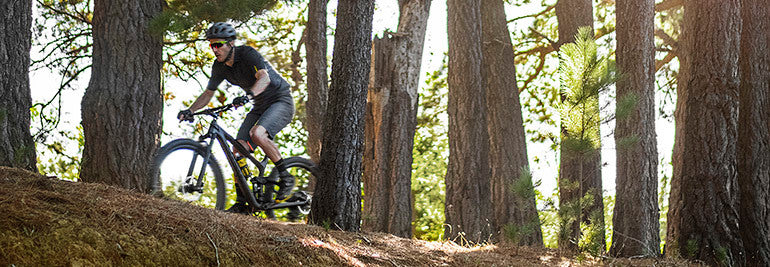
6 ways to find new MTB trails (that don’t involve Google)
Reaching for the Google is an instinctive impulse to answer almost every question that pops into our heads. With countless important questions, such as, “what is the world’s ugliest dog?”, or, “what to do if a ginger kid bites me?”, the internet has an answer for everything.
Yes, it’s also a valuable place to search for new MTB trails. But sometimes what is mirrored back is impersonal, superficial and without context. It lacks the richness that comes from hearing from a real person. Ask any investigative journalist, and they will tell you, you can only get so far with Googling; finding people to talk to is where the real story is.
To help you get the scoop on the most awesome local trails, we’ve put together a list of sources to consult.
Talk to your local bike shops
Bike mechanics and retailers talk to local trail aficionados everyday on the job. Chances are they are one themselves. Take your bike in for a tune up, and strike up a conversation about the local trails. Make your question personal, rather than general: where are your favorite places to ride around here? Many shops organize group rides for their customers.
Visit your local MTB club
This will be a goldmine of intel. Most larger cities have MTB clubs or meetups, which usually have club outings and meetings. Get in touch, go along on a ride. Usually every club has a few people who all the other members revere as gurus of sweet trail. Volunteer for trail maintenance work that trail advocacy groups and clubs do. When you give, you are also more likely to receive!
Stop and say hello
If you’re out on a trail and cross paths with another MTBer, greet them and strike up a conversation. He or she might have some trail secrets to share that could open your horizon of biking possibilities.
Check out our heatmaps
The Suunto app’s Heatmaps feature allows users to select different activities – mountain biking, hiking, running and so on – to find places and trails popular with other users. Zoom in and look more closely at the paths, switch to satellite or terrain maps, to see whether the paths are forest roads or single trails and to better gauge popularity. And look at where people aren’t riding; maybe there’s something worth exploring there? Another trick is to switch to the trail running heatmap because trail runners usually prefer single trail – this might help you hone in on the best rides.
Follow other riders in Suunto app
In addition to using heat maps to find places to ride on Suunto app, get social: start following other Suunto app users, engage with them and see where they ride. You can create routes based on your friends’ activities and sync those to your Suunto for navigation.
Import routes from Strava
You can find awesome rides by following people on Strava. You can then save their routes and use them in your Suunto for navigation. You can also find and create routes and sync them to your Suunto with other external route tools or services, such as Komoot, Outdoor Active and Wikiloc.














































































